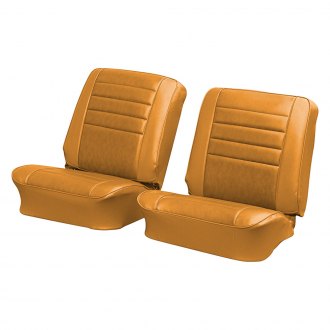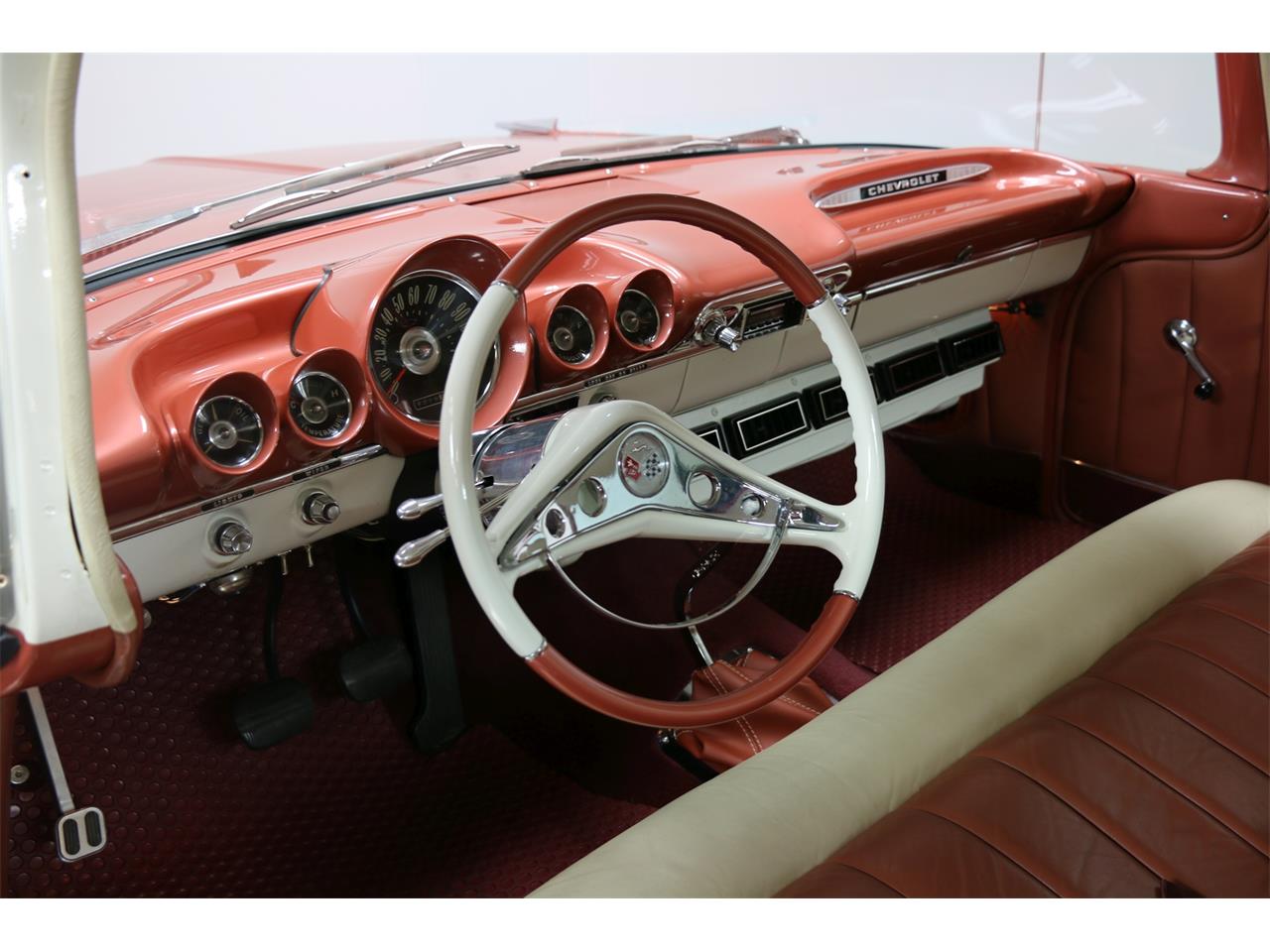

And I don't think the Biscayne had the stamped designs on the door panels and upper seat cushions. And although most people believe the El Camino had a "Biscayne" interior, they were different the seat covers were nearly identical but slightly different inserts.

SMS in Canby Oregon has the correct door panel and seat covers. Bench Seat Cushion Set, 1971 - 72 El Camino (Without Armrest) American Cushion. I'm not looking to put an Impala interior in this original car. You're right about the trim tag all 59 El Caminos except those painted blue or green had a TRIM 803 gray interior, like mine. So far, no one has shown me any positive proof what the material was. Mine look like they've been there for 56 years. I have pretty much confirmed that the headliner is correct still looking for confirmation about the sun visors. I've only owned my 59 Elky for 5 years and don't know much of its history, but the existing headliner is the diamond pattern and the sun visors are the "fish scale" or Sequin pattern. The trim number on the cowl tag will help identify which interior it came with. The trend has been to rewrite history and "restore" these cars with Impala seats.

The correct headliner was the vinyl diamond pattern, the "fish scale" was reserved for the Impala 2 door and 4 door Hardtops. It is a custom completely restored 1959 El Camino with a GM crate 350 cubic inch engine, custom paint job and interior. (I don't know if 59 had a red Biscayne interior, I know in 60 they did not) Description 1959 Chevrolet Orange El Camino Why This Car Is Special If you ever wanted a show-stopping custom car, then we have one here for you at Skyway Classics that will knock your eyes out. Original split bench seat re-trimmed in two-tone vinyl to match interior. For reference, the most expensive 1959 Elky sold in 2020 hammered for $81,400 at Mecum’s 2020 Kissimmee auction.The side trim was Belair and the interior trim was on the Biscayne platform only colors offered were gray, green and blue. Chevrolets El Camino pickup (or coup utility vehicle) was first introduced in. Unfortunately, the consignor didn’t mention what kind of 350 was used for this build.Īs opposed to the 1959 El Camino on which it’s based, the bite-the-back-of-your-hand beautiful Triton is certain to fetch a lot of money despite the uncomfortable-looking seats. Four twin velocity stacks top a 350 small-block V8 with custom-designed valve covers, a muscly little powerplant that’s kept cool by a twin-fan aluminum radiator. The see-through roof allows passersby to glance inside the vehicle, where you’ll find individual bolsters for the fighter jet-inspired seats, a cut-down steering wheel, and a horseshoe-like transmission shifter.Įven the engine compartment is a work of art that blends vintage and modern elements to create a sight to behold. Offered by Barrett-Jackson from the Petersen Vault at no reserve, this one-of-a-kind coupé utility is rolling on turbine-style wheels that feature yellow-striped tires. Old-school Cadillac influences are most obvious at the rear of the vehicle, where you’ll find two tail fins, no fewer than seven chrome bars on the handle-less tailgate, and a tonneau cover that raises on hydraulic struts and billet hinges. Even custom builders took a liking to it, which brings us to a one-off show car that won the Barris d'Elegance award at the 2015 Grand National Roadster Show.Įnvisioned by George Barris associate Karl Krummy and finished by Keith Dean, the “Triton” is half El Camino and half Eldorado. More stylized and a bigger commercial success than Ford’s contender, the Chevrolet El Camino is also a favorite of the restomodding scene thanks to the simplicity of the A-body platform the Elky used from 1964 to 1981. General Motors introduced the Brookwood station wagon-based pickup truck after Ford introduced the Ranchero in December 1956 for the 1957 model year. Be that as it may, the Elky features a relatively humble origin.


 0 kommentar(er)
0 kommentar(er)
